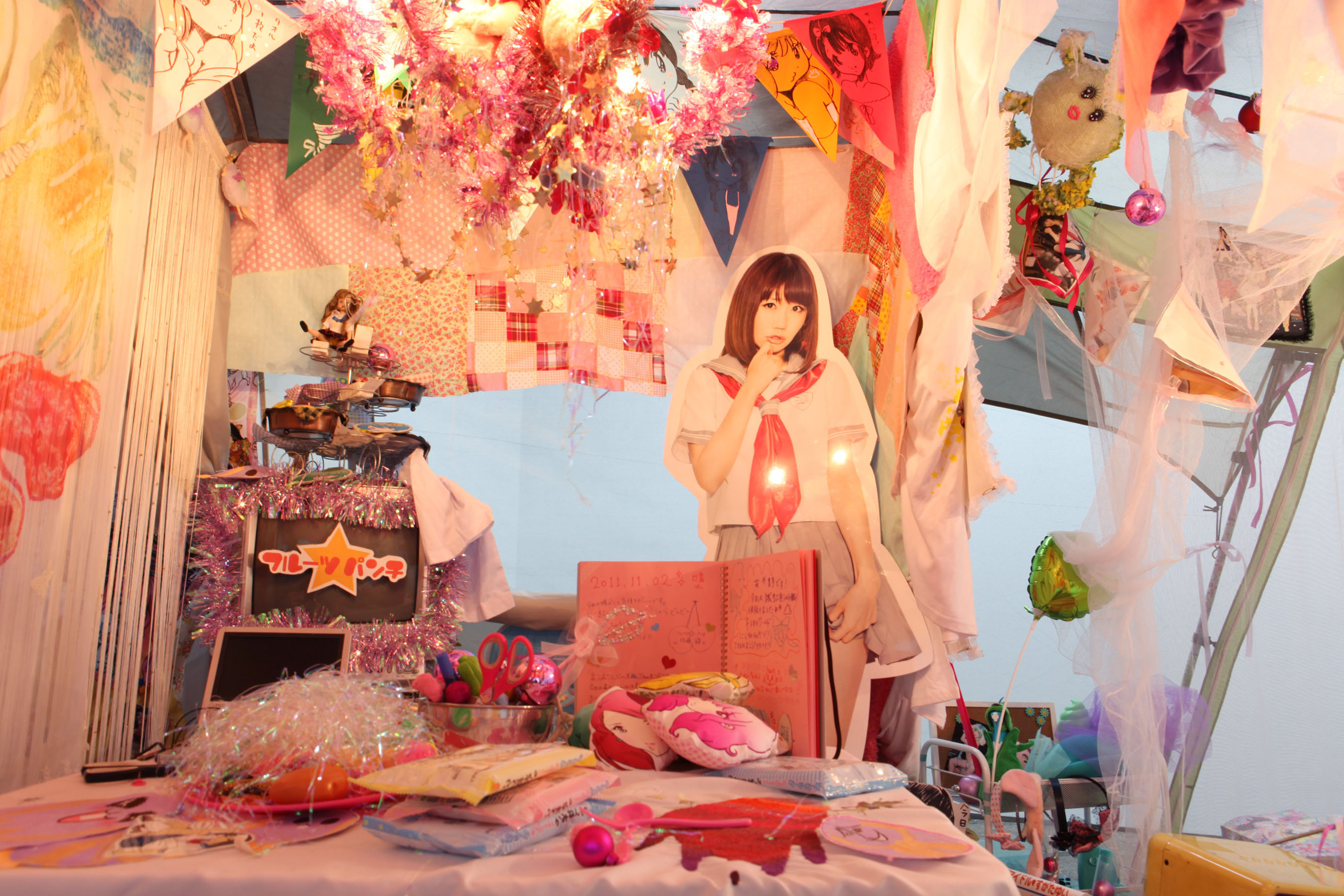It's one of the most enigmatic questions of all time: What is art? Any gallery that holds an exhibition using that as its theme is either taking things very seriously indeed, or it's having a laugh.
"AIDA Makoto: Be it Art or not Art," at the Tokyo Wonder Site, Hongo, definitely leans toward the latter. The exhibition, which is the first in the TWS "Emerging/Master" series, teams Makoto Aida, as an established "master," with younger "emerging" artists.
Aida has, over the past 10 years or so, risen to prominence both in Japan and abroad. His work spans a wide range, from paintings of supreme technical skill and grotesque beauty, such as "Giant Salamander" (2003), to comedic home videos like "The Video of a Man Calling Himself Bin Laden Staying in Japan" (2005). Within his body of work, however, is an ongoing sense that Aida really doesn't like people to take art too seriously. This is something that the young artists he has gathered together for this show seem to share.
First is an installation by TEAM Makopuri, a loose collective of young female artists assembled by the artist Mako Watanabe, aka Makopuri, a member of the underground Japanese "idol" group Fruit Punch. The work consists of an inflatable life raft — covered in various turquoise fabrics — and a family-size tent, awash with pastels and pink, and decorated with graffiti of anime-style girls, flowers, heart-shaped balloons, glitter, taffeta and bows. On the roof of the tent, in big pink lettering, is the word "ESCAPE" — perhaps indicating the creators' desire to escape adulthood and the real world: To float away to a place of girlish fantasy, taking all that is important with them.
Inside the tent, it looks like a slightly disturbed (or perhaps in this day and age, perfectly normal) teenage girl's bedroom has exploded: the cute rubble of childhood — stuffed toys, Barbies, diaries — mixed with the shrapnel of sexual awakening — soft-porn self-portraits, Lolita-esque pinups and broken sex toys. It's a space devoid of any male presence, except that of the voyeur — a division between the sexes that mirrors a society in which adolescent-girl idol groups command the attention of pervy older male fans.
Other artists in the show share TEAM Makopuri's playful approach to art. Chiho Hayashi's films, for example, play out like a child's nightmares — featuring furry animal suits, bleeding carrots and exploding bears. While Fuyuhiko Takata's videos show him dressing up as Lady Gaga or wearing a giant Japan-shaped penis. It all feels very art-studenty, but the immaturity of these creators is what makes this show so interesting — kids are often more observant than we give them credit for.
Aida's own work, too, feels like a school craft project. His "Monument for Nothing II: 21st Century Cardboard Guild" is a work in progress that will culminate in an exhibition at Mori Art Museum in late 2012. In a video, Aida explains how visitors can contribute to the project by making something out of cardboard in a room dedicated to that purpose and filled with the materials needed.
According to Aida, the concept of a "monument" is so intrinsically tied to totalitarianism — whether politically or religiously based — that in our modern individualistic world, monuments built now cannot retain any meaning. Monuments are symbols of common belief. They tell stories of shared history and myth, and throughout time, people within hegemonic societies came together to build great monuments to their gods or leaders. But in a society where many different belief systems coexist, they have lost meaning. The handmade cardboard creations of participants in Aida's project will ultimately be gathered together and assembled into a giant monument-like structure that will resemble religious tableaux that once told stories, or conveyed lessons to illiterate believers. This is art for common people with no common beliefs: A "monument to nothing."
In a way, Aida is also taking on the hegemony of the art world with this show — and encouraging individualism. In a quote from the exhibition's flier, he says: "Right now art academics are witchdoctors, fatal to those who heed their advice."
Contemporary art in Japan, particularly that which is popular overseas, has long been associated with pop culture. And under the stewardship of the artist Takashi Murakami — perhaps the biggest witchdoctor of all — Japanese art has become overpopulated with slick, polished, computer-generated and mass-produced work that is heralded as indicative of what Murakami calls Japan's "Superflat" society.
The artists chosen by Aida for "Be it Art or not Art," however, while still having their roots and influences firmly planted in the world of pop-consumerism, present work that is extremely raw, rough and unpolished. The childlike nature of this work — devoid of any cohesive ideology — is what art critic Midori Matsui would label "Micropop," and it's the infantile humor and amateurism that makes this kind of work more interesting than the hyperslick professional results of Murakami et al. It also feels like the direction in which Japanese art is, and should be, heading.
Be it art or not art? This is for the witch doctors to argue over. But, in post-tsunami Japan, blatantly commercial art feels inappropriate and cold, while the work Aida has presented here seems to accurately capture the confusion, fear and state of change in Japan today.
"Emerging/ Master 1. AIDA Makoto: Be it Art or not Art" at Tokyo Wonder Site, Hongo, runs till Dec. 25; admission free; open 11 a.m.-7 p.m. (Thu. and Sat. till 8 p.m.), closed Mon. For more information, visit www.tokyo-ws.org.


















With your current subscription plan you can comment on stories. However, before writing your first comment, please create a display name in the Profile section of your subscriber account page.